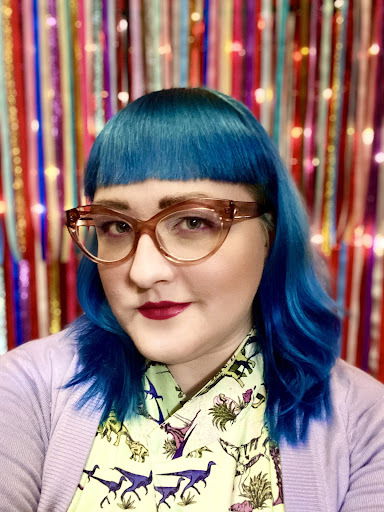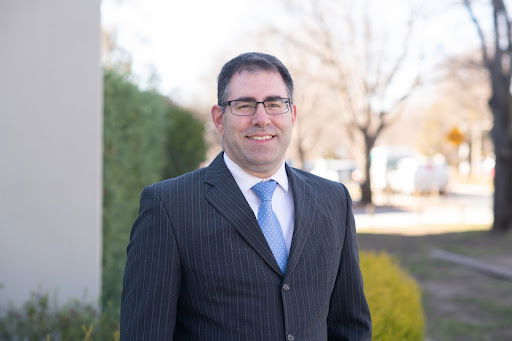Managing Autistic Employees: Synergy Group Australia [Case Study]
![Managing Autistic Employees: Synergy Group Australia [Case Study]](https://static1.s123-cdn-static-a.com/uploads/5695988/2000_618d2a73bd2a5.png)
Rachel Worsley | 17/11/2020
Autistic professional Ashlea McKay and her manager Matthew Watkins discuss their working relationship, with practical examples.
Synergy Group Australia
Ashlea McKay, a manager in the Synergy User Experience (UX) team, spends most of her time leading user research projects. Her manager, Matthew Watkins, is the partner for Digital & Technology, leading the overall practice, teams and service line.
Ashlea was hired through a regular hiring process at Synergy Group Australia, a Canberra-based professional services firm, in mid 2019. Matthew hadn’t received formal autism awareness training when he started working with Ashlea. At the time of writing, both of them have worked together for about 18 months.

Ashlea McKay
Manager, Synergy User Experience team

Matthew Watkins
Partner, Digital & Technology
What does your typical day-to-day working relationship look like?
Ashlea: Because I work in a consulting environment, my day-to-day tasks come from whatever client or internal job that I’m on and can come from inside or outside of the organisation. I have a high degree of autonomy and flexibility in my role. If I need something, I send a quick message to Matt via Microsoft Teams and anytime I want to know something I just ask, or we have a meeting. We also have a regular monthly meeting where we check in with my performance development tracking.
I am also the Diversity and Inclusion lead for our service line (Digital & Technology) so we talk about my work in that space too, but a lot of our interactions are around things that go around the work, such as ways of working.
Matthew: Specifically for Ashlea, I know it helps when I make myself available to her and respond within a reasonable timeframe. In terms of day-to-day interactions, she knows she has myself and others available to ask questions, clarification or support.
Meltdowns are common for autistic adults. Ashlea, how does Matthew support you during a meltdown? Matthew, how do you help Ashlea if she is experiencing a meltdown?
Ashlea: In the rare event that I do have a meltdown at work, I am supported in many different ways. For me, meltdowns manifest as crying or word-vomit, and at work I’m safe to go through that experience without being judged. I’m a person and that’s how I’m seen and treated.
Matt supports me by listening, and if I need to go home or go to a quiet room that is totally fine. Because I feel supported, the meltdowns happen less often, and recovery is much faster. We’re at the point now where I can bounce back in pretty much an hour or so, which is a really positive thing because, for example, if I go Christmas shopping in a mall in December, I could break my brain for two days. With the right support, meltdowns don’t have to be a big deal or something that impacts upon my wellbeing and productivity.
Matthew: I support Ashlea directly, but also influence others to support her and give her the space she needs. When she’s overwhelmed, it’s just about bringing it back and helping her understand or interpret things that she’s misinterpreted and create some space.
In terms of this meeting for example, the questions were sent up front and she had time to prepare her answers so she doesn’t worry that she’s giving you a poor response in the moment. That translates to any meeting or project plan. By allowing the mental space to choreograph that, along with the hours she wants, this optimises her ongoing management so she can allow herself to be more effective.
What have been the common triggers for meltdowns and what supports and accommodations have you implemented?
Ashlea: Some of the earlier meltdowns I had last year, before we implemented ways of working that work for my brain, were around energy levels. For the first 5-6 months I was working all five days and found by lunchtime Friday, I wasn’t functioning. My brain was absolutely fried, so we restructured my working week with my full workload being worked between Monday morning and 12 noon Friday, which I can do. Friday afternoon is when I recharge.
Matthew: In terms of the way Ashlea works best, she knows I have her back so when she engages with new people or on a new project, she informs them upfront about her requirements and copies me in. She knows if anyone were to raise any queries, then I would step in and back her and that’s made her more confident to deal with those scenarios.
Matthew, have you ever received formal autism awareness training?
Matthew: I don’t recall receiving any formal training, but I’m quite curious so I ask a lot of questions so I can try and understand. Generally speaking, there is a lack of empathy in our industry despite the type of work we do, but having the ability to understand, even partly, what others may be going through allows you to create a situation where they can handle things better.
Have there been any challenges or mistakes, and if so, what have you learned from such experiences?
Ashlea: It’s worth mentioning that when you haven’t worked with someone like me, you’re going to make mistakes and that’s OK, it’s part of being human. At the beginning, most of the challenges related to energy levels, but I could’ve said something. We all need to meet each other halfway.
We recently had a chat about mental processing time. I was struggling to get the amount of mental space I needed to process information before responding to questions or approaches. I often need a little bit more time than other people to stop and think and that pause can sometimes be misinterpreted.
The people involved thought they were being helpful but didn’t understand what was going on. It was really just a mismatch of communication styles, so we sat down as a group and worked out ways of how we can meet each other in the middle. We came up with a safe word. If we want someone to give us space, in our team we say “banana” and if we’re in a client-facing space where that wouldn’t be appropriate, we turn our phones over on the table.
Matthew: This is not an example directly related to Ashlea, but we did hire people into our overall team that didn’t turn out to be a great fit. Some of their behaviours were against treating people differently, when there sometimes is an element where you have to make allowances for different individuals.
For example, Ashlea has her own desk (in a hotdesking environment) and that allows her to feel more stable and settled. I had a team member ask why one person gets special treatment over another and the mistake was hiring a person who thought that way, so we’re currently looking at refining the questions we ask in interviews.
How has your working relationship evolved over the last 18 months?
Ashlea: The understanding has definitely grown, but the empathy and willingness to learn was always there. I came to this firm after a very long job hunt, with a lot of trust issues. I had to learn how to trust again, which I have and that’s been really positive. I’ve actually become better at trusting people more in general.
Matthew: She’s hit the nail on the head with the point about trust. I’ve seen it in a few consultants, where they’ve had very poor experiences or have been treated badly, so it’s natural to come into a new engagement fearing the worst, because you’re almost preconditioned.
In terms of Ashlea, her confidence has really grown in the last 18 months, and that translates to higher performance. She has amazing talents, and they could’ve been held back because of trust, but now she feels free to branch out and show more of her leadership traits.
What are your top tips for autistic professionals and individual managers who are managing an autistic employee?
Ashlea: Always remember that it’s OK to make mistakes, they’re going to happen. Try building a culture where people meet each other halfway, rather than one group needing to fit in with everyone else. It’s more about everyone coming together and understanding different ways of working.
I also feel that supporting autistic differences in the workplace isn’t that hard. It’s a mindset. You need to be open to seeing autism as a normal human difference. That’s half the battle, and the other is talking to the individual because there isn’t a one-size fits all approach to supporting autism in the workplace.
Thirdly, I’ve never been limited in any way while working at Synergy. I’ve never been told that I can’t do something due to my autism and I’ve always been given a fair shot at opportunities to grow. We’ve always focused on removing or reducing the external barriers to my success which is how it should be. Managers of autistic employees can learn a lot from this approach.
Matthew: I’m lucky enough to be in a position where I can create new jobs and new roles, so I see it as my obligation to make sure that I set it up in a way that allows everyone a fair go.
If you’re in a managerial position, you need to have a degree of empathy and patience to allow people to adapt to the new environment and build trust, which can take time, and look at how you can help them excel and create a situation where they can be successful.
The third would be, if we create this situation for Ashlea, where she’s comfortable with her personal situation, then she’s able to do what she’s doing now which is to educate more broadly and taking a role in our practice as its Diversity & Inclusion lead or outside it, like with what she’s doing with the Australian Computer Society’s (ACS) National Diversity & Inclusion Council (NDIC) where she can use her position to influence other people.
Finally, I challenge other organisations to do better than us. If you can support autism in the workplace better than we do, then you’ll be making a big impact.